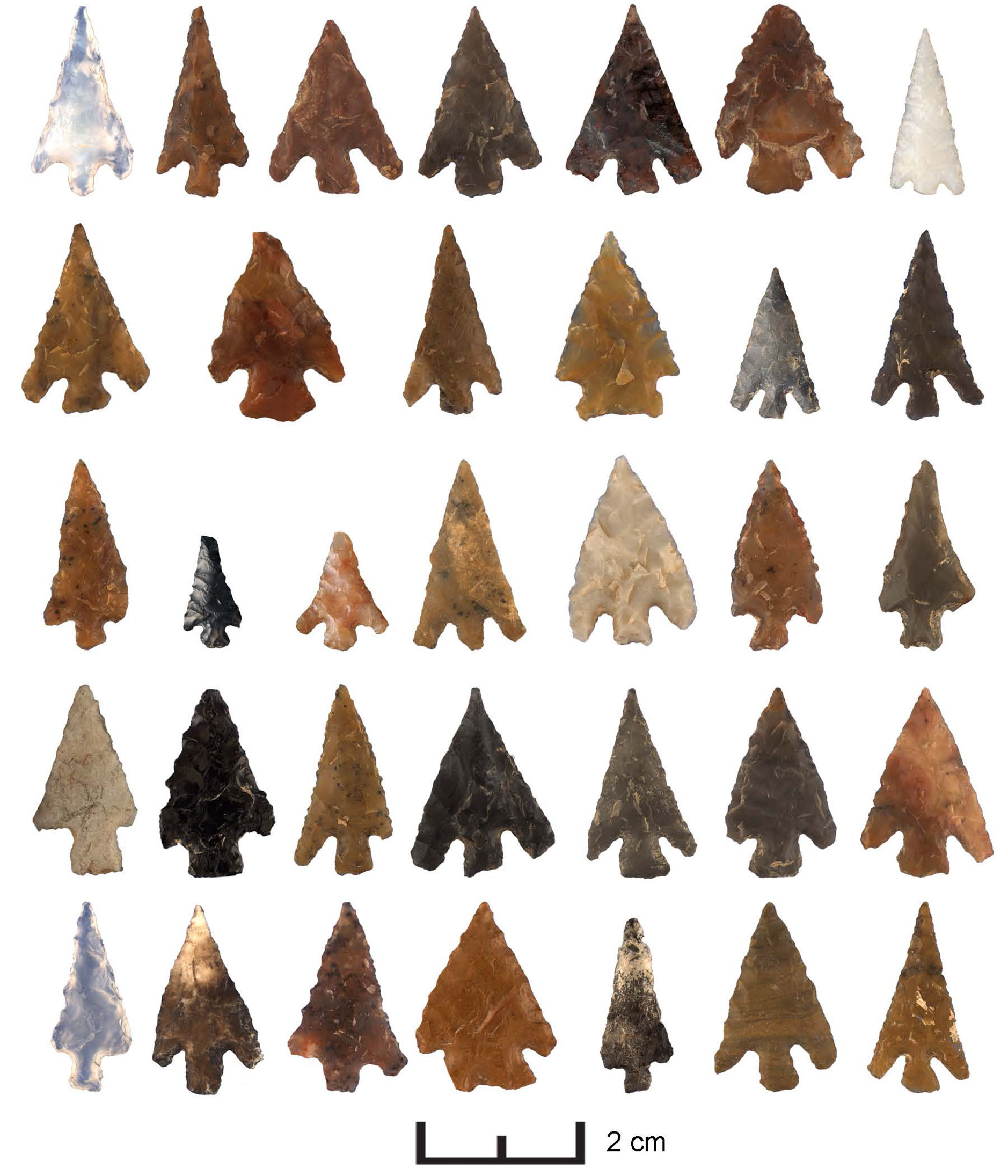Introduction
Archaeologists working in the Fremont region have benefited for decades from a standard projectile point typology established in the 1980s (Holmer 1986; Holmer and Weder 1980). Numerous excavations have since occurred, and a wealth of new projectile point data and absolute dates are now available. Given this new data, we believe it is time for a general review of Fremont projectile point types; however, this study is limited to two questions we argue are in particular need of addressing: (1) how long do Rosegate points persist in the Fremont region, and (2) should Rosegate points be considered separately as Rose Spring Corner-notched and Eastgate Expanding-stem (hereafter Rose Spring and Eastgate)?
Definitions of Fremont diverge, but, by any definition, most Fremont people were small-scale horticulturalists relying on a mixture of maize and other cultigens, as well as wild resources (for recent summaries see Allison 2015; see also Madsen and Simms 1998; Simms 2008). The Fremont can be considered an archaeological culture region and a period, dating primarily from AD 700-1300. The Fremont region comprises much of what is now the state of Utah, north of the Virgin and Colorado rivers, as well as bordering states. Fremont populations reached their peak and greatest spatial extent between AD 1000-1300 (Talbot 2000:278). The end of horticulture in the region, and thus the end of the Fremont period, was approximately AD 1300 in most areas (Allison 2010). Many characteristics are reminiscent of neighboring cultures in the Southwest, but distinctive rock art, moccasins, basketry, figurines, and a handful of other traits distinguish the Fremont from their neighbors to the south (Talbot 2000).
The chronology of Rosegate point types is of particular importance, as Fremont dating is poorly developed, especially when compared to the high-resolution tree-ring and ceramic chronologies used in adjacent areas of the Southwest. Many Fremont ceramic types are sufficient only to identify a site to the Fremont period (see Madsen 1977), which places additional importance on the use of projectile points as chronological markers. Rosegate projectile points (Figure 1) are commonly found at Fremont sites in the eastern Great Basin and Colorado Plateau. They appear to be the earliest projectile points associated with the bow and arrow, which was introduced to the area sometime between AD 1 and 600 (Heizer and Baumhoff 1961:128; Hester 1973:126; Holmer 1986:107; Lanning 1963:249,252). Holmer and Weder (also Holmer 1986:107; 1980:60) state that Rosegate points persist until AD 900-1000. This contrasts with the central and western Great Basin where these points are known to date up to AD 1300 (Smith et al. 2013; Thomas 1981:19). Several archaeologists have commented on the late persistence of Rosegate points in Fremont sites (e.g., Aikens 1970:56; Baadsgaard and Janetski 2005:135; Berry 2005:749; Talbot et al. 1999:109; Wilde and Soper 1999:102); however, these discussions are in the context of individual sites or projects and much of it exists in gray literature that is difficult to access. Furthermore, Holmer and Weder’s dates are still commonly cited in Fremont literature and may cause inaccurate interpretations. Various other point styles, most commonly small side-notched points, appear between AD 900-1000 throughout the Fremont region and are argued to have replaced Rosegate points (Holmer 1986; Holmer and Weder 1980). This coincides with the corner-notched to side-notched transition in the rest of the Southwest (Whittaker and Bryce 2017:635), and in the Central Plains (e.g., Hughes 2017), which makes this a relevant topic beyond the Fremont region. While Rosegate points clearly declined in relative abundance through time, our investigation using projectile point data from 22 sites indicates that they were relatively common until the end of the Fremont period. We argue these points should be used as indicators of a pre-AD 1000 date only in large assemblages that contain no other arrowpoint styles. A spatial analysis of the data indicates Rosegate points are also widespread in the Fremont region after AD 1000, but these points are more concentrated in some areas.

Figure 1: Select Rosegate projectile points from Wolf Village.
Whether Rosegate points should be discussed as two separate types is less critical than their age, but several approaches are in common use and a clearer understanding of how the two types are related may generate greater uniformity in intersite syntheses. The relatively recent adoption of geometric morphometrics in archaeology provides an opportune method for investigating this question (see Cardillo 2010; MacLeod 2017; Mitteroecker and Gunz 2009; Okumura and Araujo 2019; Shott and Trail 2010). The field of geometric morphometrics has grown rapidly since its primary origin in the early 1990s in biology and is now a mature field (Adams et al. 2013; Bookstein 1991; Corti 1993; Mitteroecker and Gunz 2009; Rohlf and Marcus 1993). Geometric morphometrics can be used to analyze shape data using coordinates or outlines on 2D or 3D data (Rohlf and Marcus 1993), and a growing number of studies use these methods to analyze projectile points in (e.g., Buchanan and Collard 2010; Charlin and González-José 2018; Davis et al. 2017; Fisher 2018; Fox 2015; Okumura and Araujo 2015, 2016; Selden et al. 2020; Shott and Trail 2010; Smith et al. 2015; Thulman 2012). We found this approach useful for distinguishing types of points, although projectile points currently defined as Eastgate and Rose Spring could not be easily separated.
In this paper, we briefly review the Fremont and Rosegate projectile points before using the accumulated projectile point dataset in combination with a radiocarbon database compiled for this study to address the persistence of Rosegate points. We examine the spatial distribution of Rosegate points in this study and Rose Spring data collected by Holmer and Weder (1980) to examine whether Rosegate points are spatially clustered. We use Rosegate illustrations and photographs from eight Fremont sites to examine Rosegate morphology using methods from geometric morphometrics. We also discuss future directions for projectile point research in the Fremont region.